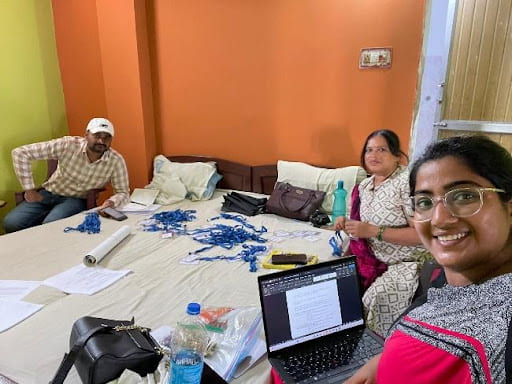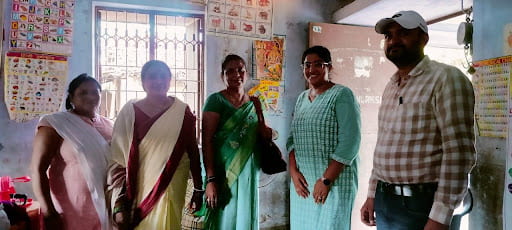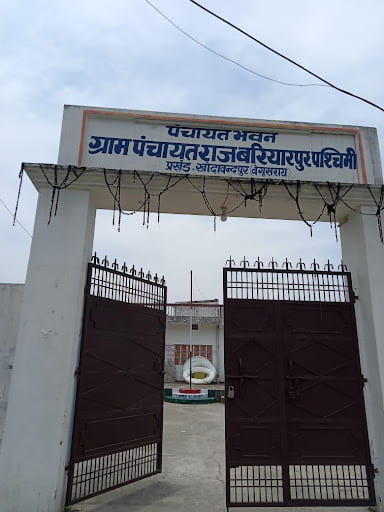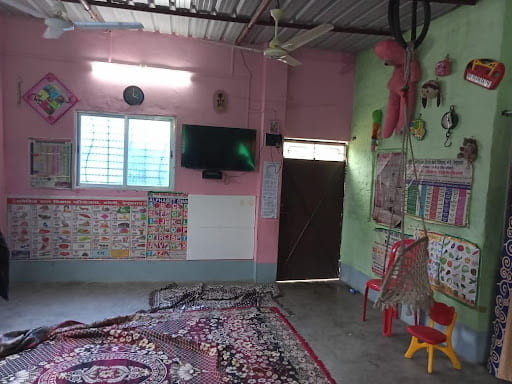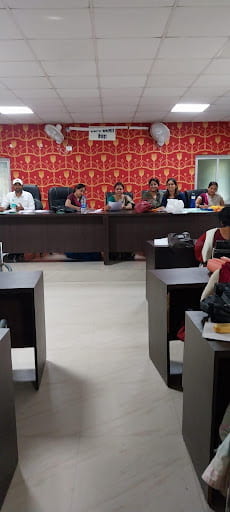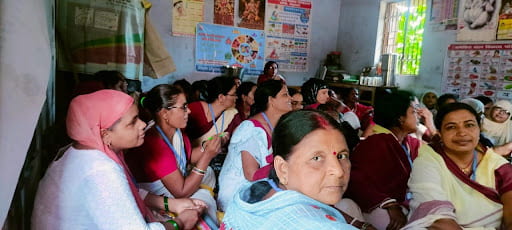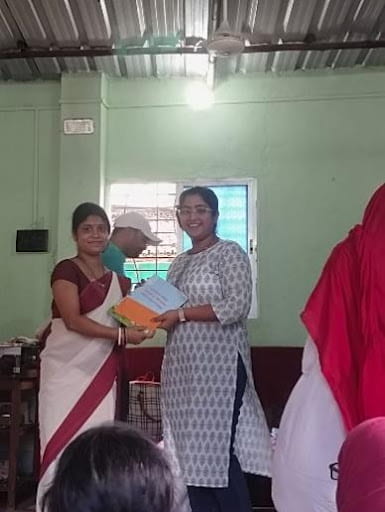Arriving at the Kempegowda International Airport in Bangalore in early July felt like I had returned back home. As I exited the airport and stepped into the warm, humid air, juggling three heavy suitcases, I felt physically drained and exhausted. But my mind was overwhelmingly excited at the thought of reconnecting with my grandparents, cousins, aunts, and uncles. As an Indian-American with deep roots in Mysore, Karnataka (about a 3-hour drive from Bangalore), I had spent countless summers in India reconnecting with family and old friends, enjoying delicious foods, immersing myself in cultural traditions and activities, and exploring ancient temples and palaces.
But I knew this visit would be different. This time, I was not just here to relieve my favorite memories; I was here to embark on a new and unfamiliar journey– I was conducting independent field research. The prospect of this new challenge brought with it immense feelings of stress and anxiety due to all the uncertainty that surrounded the process. Questions constantly filled my mind: Will I be able to find enough participants? Am I asking the right questions? Will Indian women want to talk to me? And am I capable of conducting research? However, with the steady support of my family, the continuous encouragement from my peers and advisors, and the unwavering faith my interviewees placed in me, I successfully completed my field research. As a result, this journey quickly became one of my most invaluable learning experiences. In this blog post, I aim to highlight some of the challenges I faced, how I navigated through them, and why the research process is both a rewarding and a privileged experience.
Once the jet lag wore off and I had spent some quality time with all of my family and friends, I knew it was time to focus on my research. But as I reached out to some of my contacts in India, I quickly realized that the people they had offered to connect me with did not meet the criteria for my study. This was my first challenge and realization- I had no one to interview. After my initial moment of panic, I understood that the best way to navigate this challenge was to turn to those closest to me– my extended family and friends. After explaining the situation, they immediately surrounded me, eager to help. Over the next few hours and days, they made countless phone calls to their friends and family, and soon I had a few interested participants. Additionally, my dad, who has been my biggest supporter throughout this process, also contacted his contacts, who offered invaluable assistance.
This first challenge taught me two important ideas about the research process. First, not everything will go according to plan. While this concept was significantly emphasized by all of my advisors and fellow researchers, it is one thing to hear it and quite another to experience it. However, it is important to note that if and when things fall apart, it is more than okay to ask for help because research is often not a solo process, and good research frequently relies on the support and contributions of others. In my case, it was the unwavering support and generosity of my family and friends in India.
Once I contacted my research participants and scheduled my interviews, I assumed the rest of the process would be seamless. Little did I know at that point that I would be terribly wrong. My next challenge was navigating Bangalore, a city with a dense population, heavy traffic, a complicated public transportation system (since I was not a local and could not read in the native language—Kannada), and a place where GPS maps were not always accurate or available.
Fortunately, my dad accompanied me on my journey to Bangalore. Despite having his own busy schedule, my dad graciously took on the role of my informal tour guide and support system in the city. Together, we caught many public buses, I learned how to use the Bangalore metro system, and we spent quite a few hours navigating Bangalore traffic—a challenge that locals seemed to handle with ease.
Even though the GPS maps were not always accurate, the people of Bangalore were incredibly helpful in showing my dad and me how to navigate some of the newer parts of the city. They were also extremely kind and personable. Sometimes, they would go beyond just giving us directions; they would also accompany us to our destination to ensure we reached the right place.
While navigation was still challenging at times, it pushed me to think on my feet, taught me how to problem-solve quickly, and gave me the opportunity to connect with locals—an experience that made me even more excited to meet my interviewees.
After successfully navigating through the city and arriving at my interview locations, it was finally time to interview my research participants. That’s when I encountered my third challenge- I needed to ensure that my interviewees felt comfortable enough to open up and share their stories. Although I had previously talked to some of my interviewees, established a level of trust, and assured them that all of my data would be anonymized, I also knew that if I were in their position, it might still be difficult to fully open up to a researcher I had only recently met.
Thus, I revisited my professors’ and advisors’ advice and then brainstormed ways to create a more comfortable environment. I decided to begin all of my interviews by letting the participants ask me any questions they wanted—whether about my research or my personal life. I realized that by providing a space where my participants could kind of “interview” me before I interviewed them, I established a mutual sense of trust, creating a more comfortable and safer environment for both of us.
While not all of my interviewees chose to ask me questions, many expressed appreciation at the end of the interview for having the opportunity to do so. Through these interactions, I quickly learned that being a researcher comes with a profound amount of responsibility. These women trusted me with their stories and personal experiences, which, for some of them, involved traumatic experiences, including harassment.
As a researcher, it is immensely important to recognize that conducting interviews is a significant privilege; it involves people sharing deeply personal aspects of their lives. I also learned that it is crucial to be open and willing to answer questions in return. Doing so creates a shared learning experience for everyone involved.
Ultimately, valuable field research does not come without its challenges. However, for me, it was precisely those challenges that showed me that I was resilient and capable, thus making the overall experience far more rewarding. Field research truly humbled me and granted me the privilege to listen to the stories of Indian women, connect with wonderful people, and deepen my understanding of the country that is my second home.
Aishwarya Nagabhushan, B.A. in International Affairs
Sigur Center 2024 Research Fellow Fellow
India






















